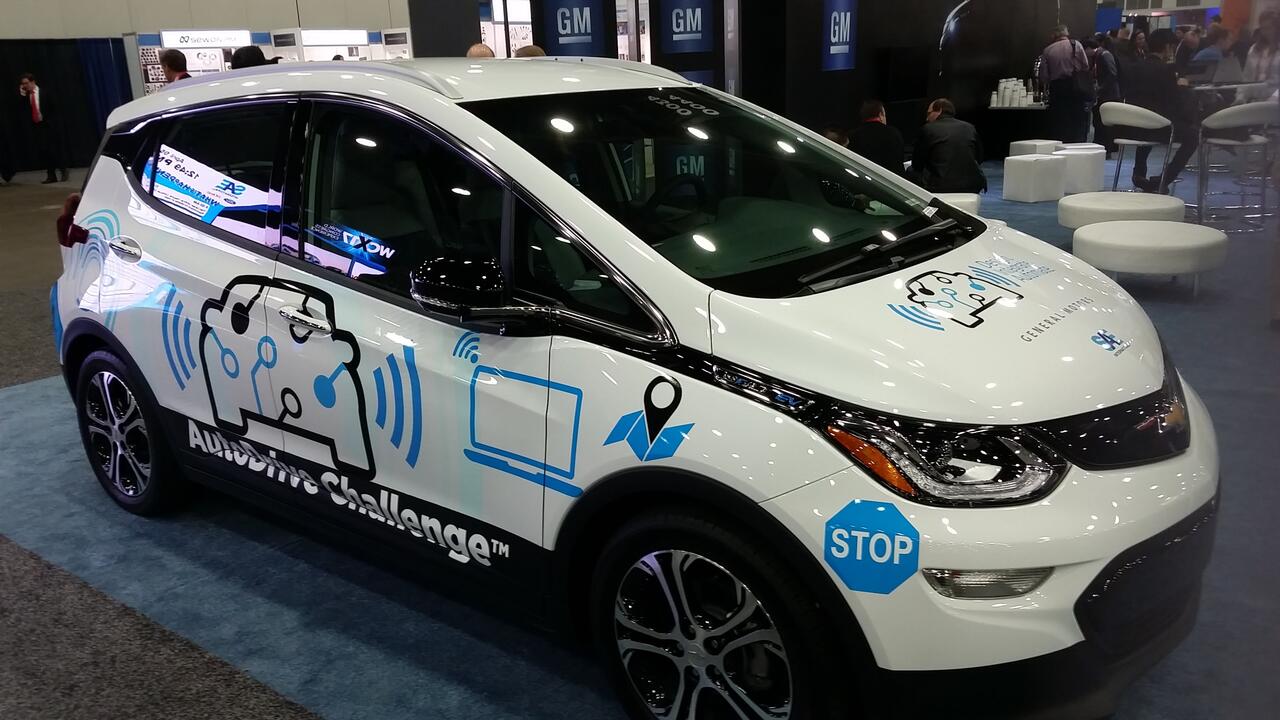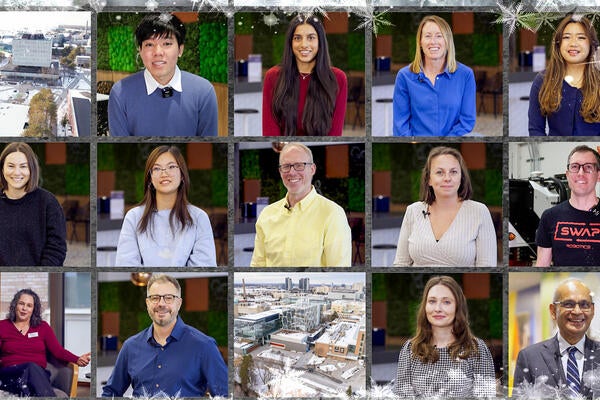
Meet the Autonomous car student design team
Waterloo is one of just eight schools across North America invited to participate in the AutoDrive Challenge

Waterloo is one of just eight schools across North America invited to participate in the AutoDrive Challenge
By Julie Stauffer Faculty of EngineeringIn October, WATonomous, the autonomous car student design team drove a gleaming white Chevrolet Bolt into the bay at Waterloo Engineering’s Sedra Student Design Centre. By 2018, the car will be driving itself out.
Waterloo is one of just eight schools across North America invited to participate in the AutoDrive Challenge — a three-year competition organized by the Society of Automotive and Aerospace Engineers (SAE) and General Motors to transform a Bolt into a fully self-driven vehicle. “It’s such an amazing opportunity,” says Ella Rasmussen, a second-year mechatronics engineering student and co-captain of the WATonomous team.
In April 2018, the WATonomous squad will bring their rebuilt Bolt to Yuma, Arizona to demonstrate how well it can stop at stop signs, follow lanes and avoid stationary obstacles, all without human intervention.
However, the ultimate goal is achieving level 4 autonomous capabilities by 2020. That means developing a self-driving car that can do things like safely navigate an unpredictable urban environment and respond to dynamic obstacles like a kid running into the street — problems that the brightest minds in the industry are grappling with today.
It’s a big undertaking, involving advanced pattern recognition software, artificial intelligence capabilities, machine learning and more. However, Rasmussen and her co-captain Briar Smith have plenty of help.
After more than 300 Waterloo students volunteered to join WATonomous, they whittled down the number to a technical team of 140. They’ve also got the backing of faculty advisors, including Derek Rayside, the associate director of software engineering, and William Melek, an expert in robotics and artificial intelligence.
Meanwhile a slew of competition sponsors have supplied the radars, LiDAR sensors, cameras, software and other bells and whistles they’ll need. “It’s not the type of thing you generally have access to as an undergraduate student,” says Rasmussen.
Today, the WATonomous team is hard at work mounting sensors, working out bugs in the simulation environments they’ve developed, integrating the computing platform into the vehicle and getting the Bolt ready for trial runs around Waterloo’s test track.
For Rasmussen, it’s an opportunity she has dreamed about since participating in robotics competitions in high school. When it came time to choose an engineering program, hands-on opportunities ranked high on her wish list. Waterloo was the obvious choice. “It’s legendary, this program,” she says. “I have wanted to come to Waterloo since I was in grade 6.”
Now that she’s here, Rasmussen is making the most of the three-year AutoDrive Challenge opportunity — which fortuitously wraps up in her final year at Waterloo. But she doesn’t plan on stopping there.
Building autonomous vehicles well suited for the warm, dry weather of an Arizona desert is one thing. But a car equipped to drive itself in foggy, icy or snow-covered environments? That’s a challenge she is keen to dig into after she graduates.
For now, however, her eyes are focused squarely on Yuma. “It’s all so awesome,” says Rasmussen. “I’m definitely really proud to be part of this team.”
For more information about the initiative, listen to CBC’s interview with Derek Rayside.

Read more
Here are the people and events behind some of this year’s most compelling Waterloo stories

Read more
A winter holiday message from President Vivek Goel

Read more
The Waterloo community comes together to remember, reflect and respond to gender-based violence
Read
Engineering stories
Visit
Waterloo Engineering home
Contact
Waterloo Engineering
The University of Waterloo acknowledges that much of our work takes place on the traditional territory of the Neutral, Anishinaabeg, and Haudenosaunee peoples. Our main campus is situated on the Haldimand Tract, the land granted to the Six Nations that includes six miles on each side of the Grand River. Our active work toward reconciliation takes place across our campuses through research, learning, teaching, and community building, and is co-ordinated within the Office of Indigenous Relations.